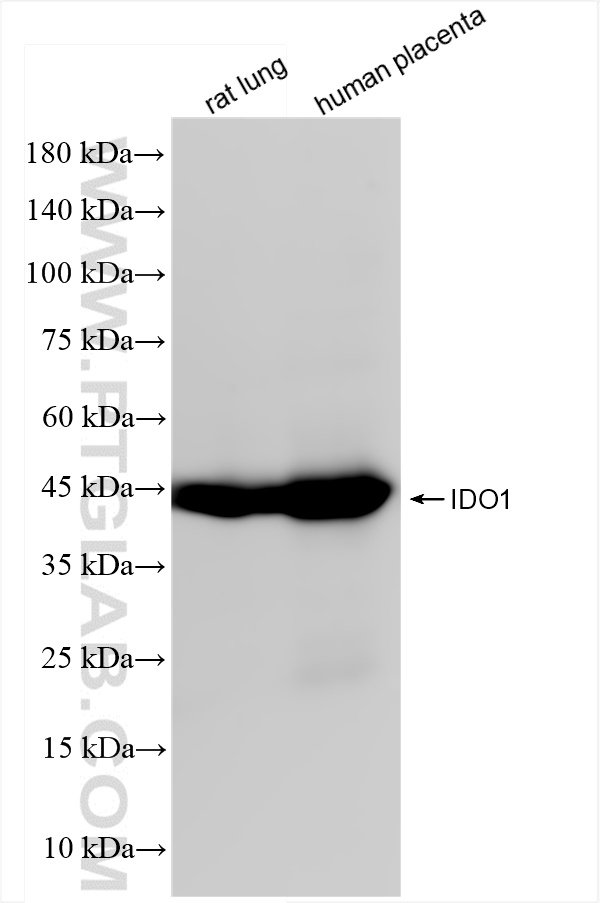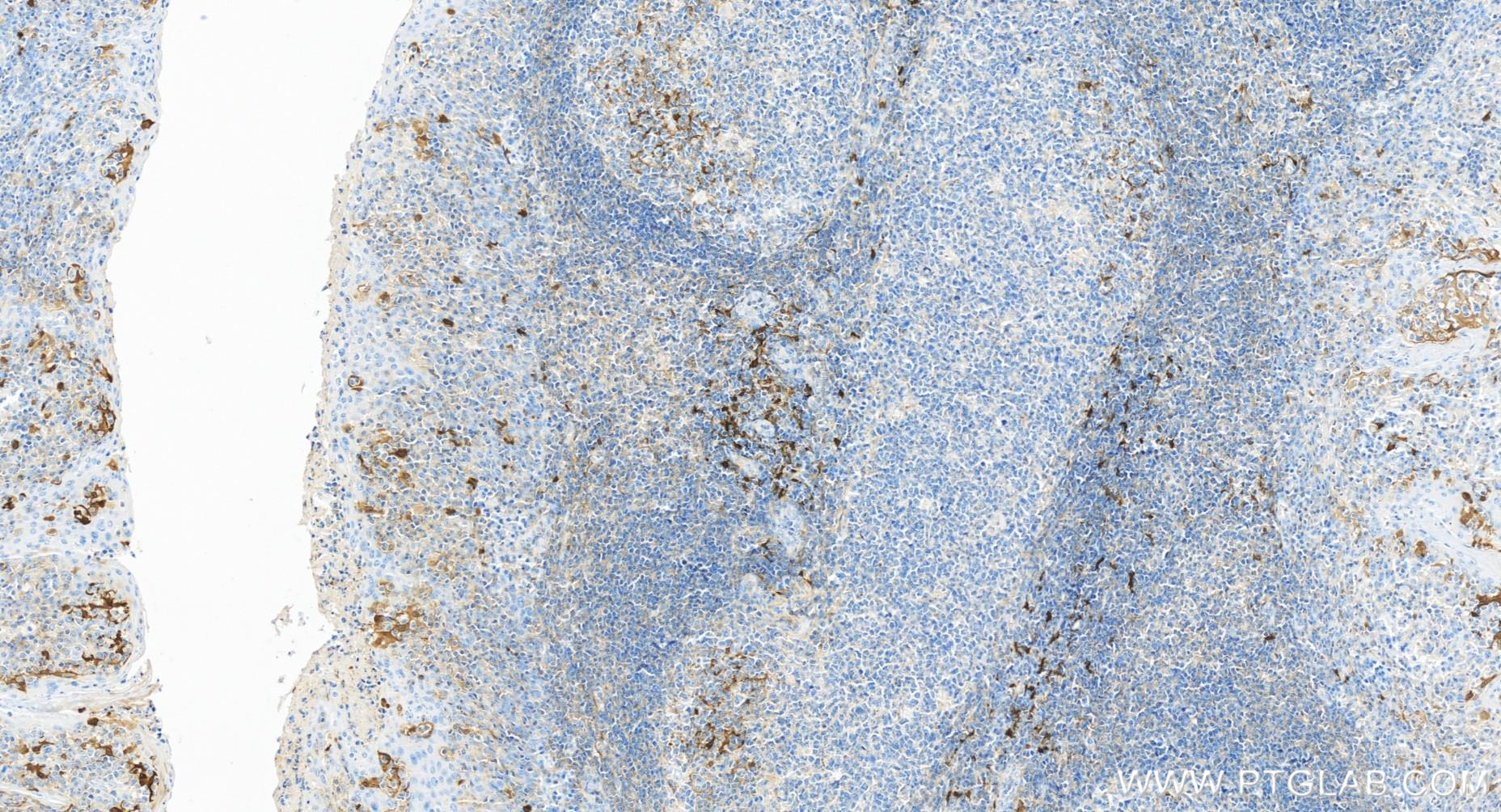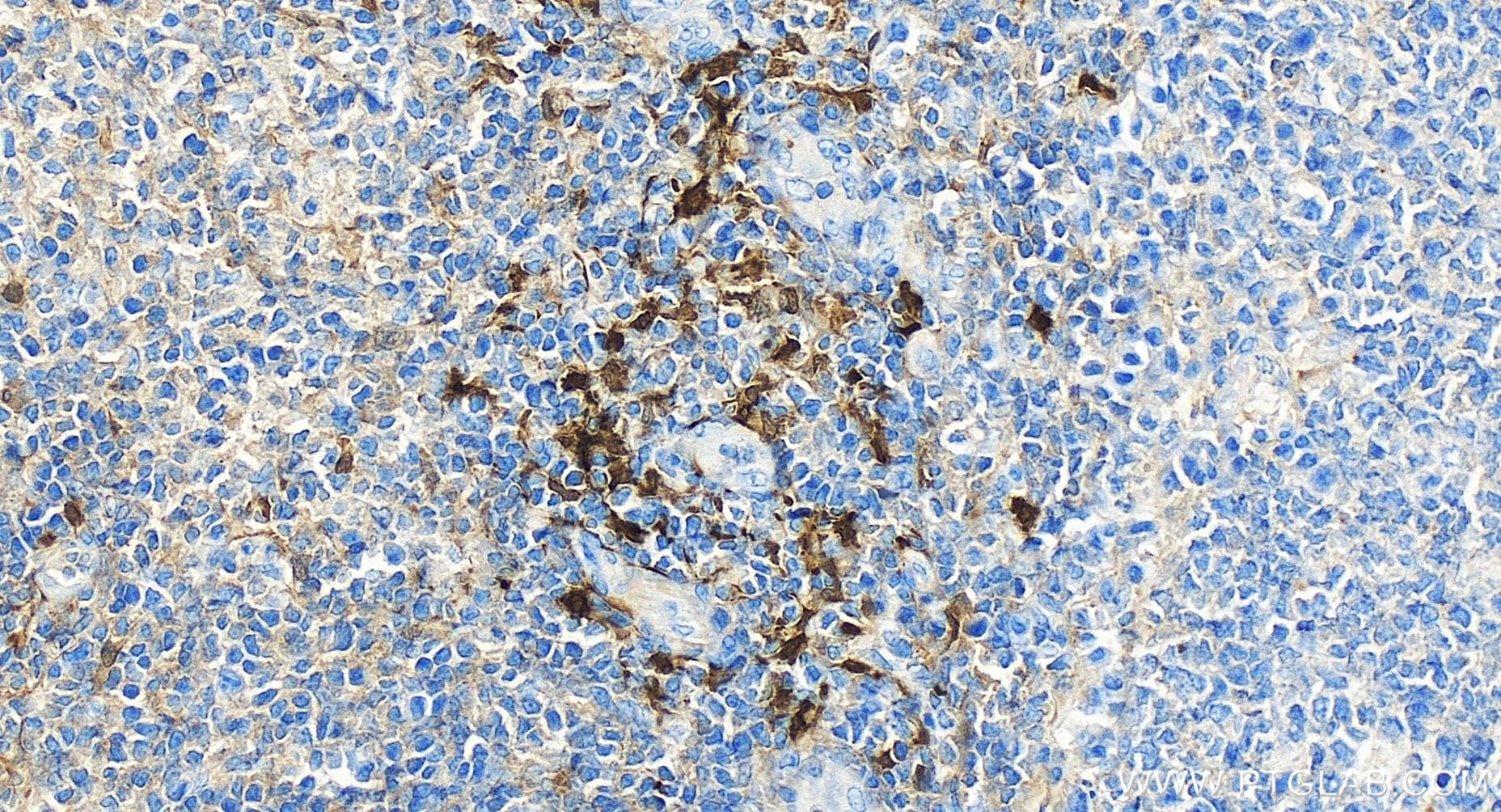验证数据展示
经过测试的应用
| Positive WB detected in | rat lung tissue, human plancta tissue |
| Positive IHC detected in | human tonsillitis tissue Note: suggested antigen retrieval with TE buffer pH 9.0; (*) Alternatively, antigen retrieval may be performed with citrate buffer pH 6.0 |
推荐稀释比
| 应用 | 推荐稀释比 |
|---|---|
| Western Blot (WB) | WB : 1:1000-1:10000 |
| Immunohistochemistry (IHC) | IHC : 1:500-1:8000 |
| It is recommended that this reagent should be titrated in each testing system to obtain optimal results. | |
| Sample-dependent, Check data in validation data gallery. | |
产品信息
84063-3-RR targets IDO1 in WB, IHC, ELISA applications and shows reactivity with human, mouse, rat samples.
| 经测试应用 | WB, IHC, ELISA Application Description |
| 经测试反应性 | human, mouse, rat |
| 免疫原 | IDO1 fusion protein Ag3953 种属同源性预测 |
| 宿主/亚型 | Rabbit / IgG |
| 抗体类别 | Recombinant |
| 产品类型 | Antibody |
| 全称 | indoleamine 2,3-dioxygenase 1 |
| 别名 | INDO, IDO-1, IDO 1, IDO, EC:1.13.11.52 |
| 计算分子量 | 403 aa, 45 kDa |
| 观测分子量 | 42 kDa |
| GenBank蛋白编号 | BC027882 |
| 基因名称 | IDO1 |
| Gene ID (NCBI) | 3620 |
| RRID | AB_3671633 |
| 偶联类型 | Unconjugated |
| 形式 | Liquid |
| 纯化方式 | Protein A purification |
| UNIPROT ID | P14902 |
| 储存缓冲液 | PBS with 0.02% sodium azide and 50% glycerol pH 7.3. |
| 储存条件 | Store at -20°C. Stable for one year after shipment. Aliquoting is unnecessary for -20oC storage. |
背景介绍
IDO1 is the target for therapy in a range of clinical settings, including cancer, chronic infections, autoimmune and allergic syndromes, and transplantation. Elevated IDO1 expression is a hallmark of major viral infections including HIV, HBV, HCV or influenza and also of major bacteria infections, such as Tb, CAP, listeriosis and sepsis. Pathogens are able to highjack the immunosuppressive effects of IDO1 and make use of them to facilitate their own life cycle. MW of IDO1 is 40-42kd (PMID: 14502282; 17055065).
实验方案
| Product Specific Protocols | |
|---|---|
| WB protocol for IDO1 antibody 84063-3-RR | Download protocol |
| IHC protocol for IDO1 antibody 84063-3-RR | Download protocol |
| Standard Protocols | |
|---|---|
| Click here to view our Standard Protocols |




